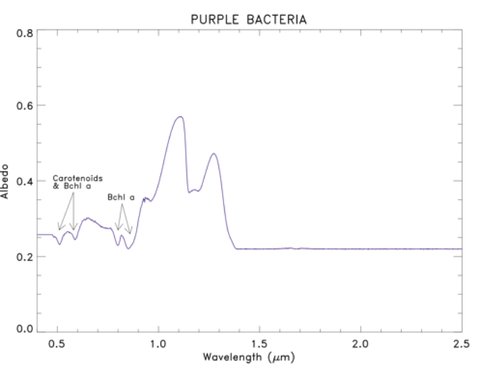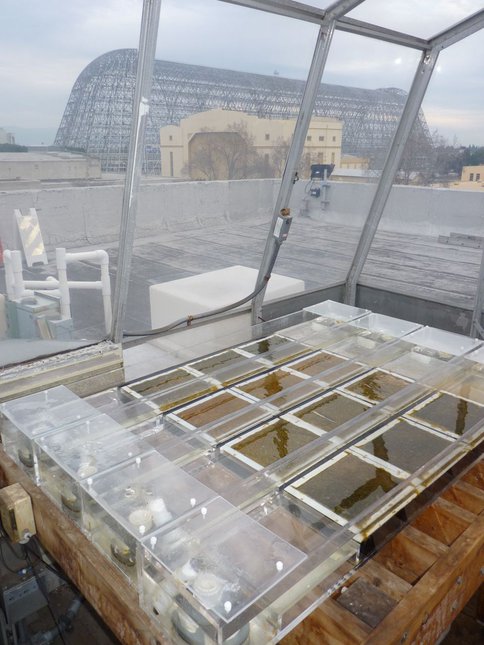2013 Annual Science Report
 VPL at University of Washington
Reporting | SEP 2012 – AUG 2013
VPL at University of Washington
Reporting | SEP 2012 – AUG 2013
Biogenic Gases From Anoxygenic Photosynthesis in Microbial Mats
Project Summary
This lab and field project aims to measure biogenic gas fluxes in engineered and natural microbial mats composed of anoxygenic phototrophs and anaerobic chemotrophs, such as may have existed on the early Earth prior to the advent of oxygenic photosynthesis. The goal is to characterize the biogeochemical cycling of S, H, and C in an effort to constrain the sources and sinks of gaseous biosignatures that may be relevant to the detection of life in anoxic biospheres on habitable exoplanets.
Project Progress
Progress for Year 1 under CAN-6 includes both field and laboratory activities. We conducted a field reconnaissance mission to Yellowstone National Park to locate and assess the status of anoxygenic mats dominated by the green non-sulfur phototroph Chloroflexus. The mats were healthy, but were located deep in a spring that is difficult to access. This initial assessment has allowed us to begin working out the technical difficulties of performing field measurements of biogenic gases and volatile organic compounds using the Hiden HPR40 membrane inlet quadrupole mass spectrometer, which we will undertake in the summer of Year 2.
For the laboratory studies, we have obtained a large anaerobic chamber and are installing it in the rooftop greenhouse facility at NASA Ames Research Center, which houses the marine/hypersaline microbial mats. We are also developing small vessels that cores of the mat can be placed in so that we can quantify gas fluxes under (1) different starting atmospheric compositions (modern and Archean), (2) different light regimes (full sun, Archean high UV, M dwarf radiation), and (3) different electron donors (H2, H2S, Fe(II)). We are obtaining baseline data for the mats in the oxygenic state, and will transition them to anoxia in two months.
Through team member Nancy Kiang, we also established a collaboration with Spanish astronomers Esther Sanromá and Enric Pallé. We measured the reflectance spectra of purple non-sulfur anoxygenic phototrophs for use in their radiative transfer model, which simulated the visible and near-IR radiation reflected by an Archean Earth. That project resulted in a publication which is under review (Sanromá et al., submitted).
Publications
-
Sanromá, E., Pallé, E., Parenteau, M. N., Kiang, N. Y., Gutiérrez-Navarro, A. M., López, R., & Montañés-Rodríguez, P. (2013). CHARACTERIZING THE PURPLE EARTH: MODELING THE GLOBALLY INTEGRATED SPECTRAL VARIABILITY OF THE ARCHEAN EARTH. The Astrophysical Journal, 780(1), 52. doi:10.1088/0004-637x/780/1/52
-
PROJECT INVESTIGATORS:
-
PROJECT MEMBERS:
Niki Parenteau
Project Investigator
Tori Hoehler
Co-Investigator
Nancy Kiang
Collaborator
-
RELATED OBJECTIVES:
Objective 4.1
Earth's early biosphere.
Objective 5.2
Co-evolution of microbial communities
Objective 5.3
Biochemical adaptation to extreme environments
Objective 6.1
Effects of environmental changes on microbial ecosystems
Objective 6.2
Adaptation and evolution of life beyond Earth
Objective 7.2
Biosignatures to be sought in nearby planetary systems


